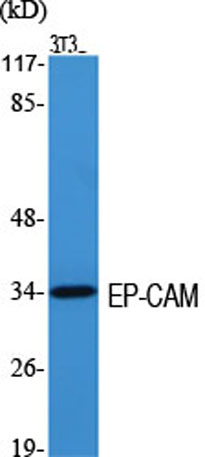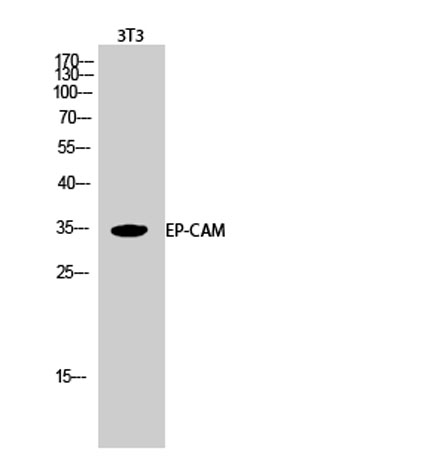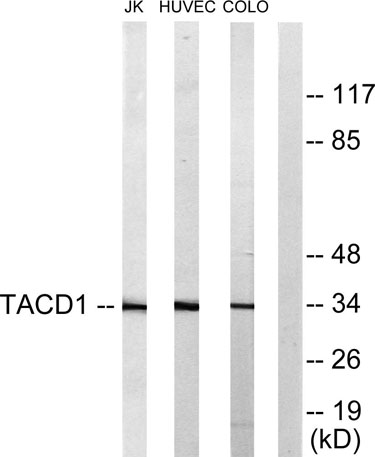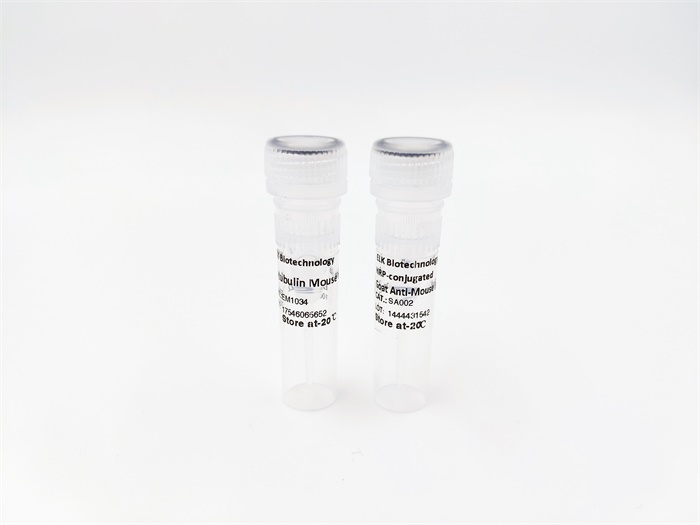








EP-CAM rabbit pAb
 One-click to copy product information
One-click to copy product information$148.00/50µL $248.00/100µL
| 50 µL | $148.00 |
| 100 µL | $248.00 |
Overview
| Product name: | EP-CAM rabbit pAb |
| Reactivity: | Human;Rat;Mouse; |
| Alternative Names: | EPCAM; GA733-2; M1S2; M4S1; MIC18; TACSTD1; TROP1; Epithelial cell adhesion molecule; Ep-CAM; Adenocarcinoma-associated antigen; Cell surface glycoprotein Trop-1; Epithelial cell surface antigen; Epithelial glycoprotein; EGP; Epithelial gly |
| Source: | Rabbit |
| Dilutions: | Western Blot: 1/500 - 1/2000. Immunofluorescence: 1/200 - 1/1000. ELISA: 1/5000. Not yet tested in other applications. |
| Immunogen: | The antiserum was produced against synthesized peptide derived from human TACD1. AA range:116-165 |
| Storage: | -20°C/1 year |
| Clonality: | Polyclonal |
| Isotype: | IgG |
| Concentration: | 1 mg/ml |
| Observed Band: | 34kD |
| GeneID: | 4072 |
| Human Swiss-Prot No: | P16422 |
| Cellular localization: | Lateral cell membrane ; Single-pass type I membrane protein . Cell junction, tight junction . Colocalizes with CLDN7 at the lateral cell membrane and tight junction. . |
| Background: | This gene encodes a carcinoma-associated antigen and is a member of a family that includes at least two type I membrane proteins. This antigen is expressed on most normal epithelial cells and gastrointestinal carcinomas and functions as a homotypic calcium-independent cell adhesion molecule. The antigen is being used as a target for immunotherapy treatment of human carcinomas. Mutations in this gene result in congenital tufting enteropathy. [provided by RefSeq, Dec 2008], |
-
 Western Blot analysis of various cells using EP-CAM Polyclonal Antibody diluted at 1:2000
Western Blot analysis of various cells using EP-CAM Polyclonal Antibody diluted at 1:2000 -
 Western Blot analysis of 3T3 cells using EP-CAM Polyclonal Antibody diluted at 1:2000
Western Blot analysis of 3T3 cells using EP-CAM Polyclonal Antibody diluted at 1:2000 -
 Western blot analysis of lysates from Jurkat, HUVEC, and COLO205 cells, using TACD1 Antibody. The lane on the right is blocked with the synthesized peptide.
Western blot analysis of lysates from Jurkat, HUVEC, and COLO205 cells, using TACD1 Antibody. The lane on the right is blocked with the synthesized peptide.

 Manual
Manual